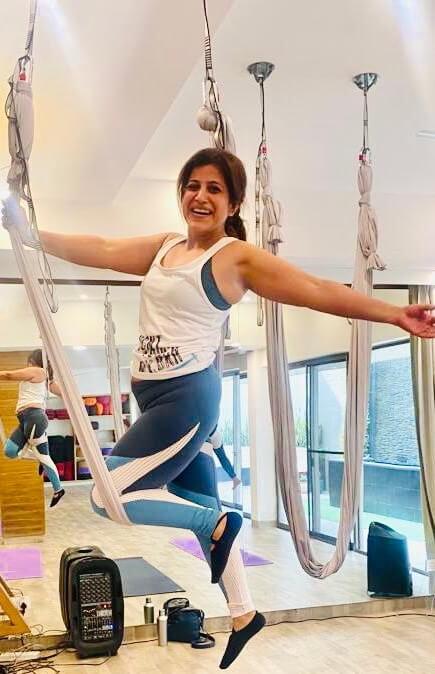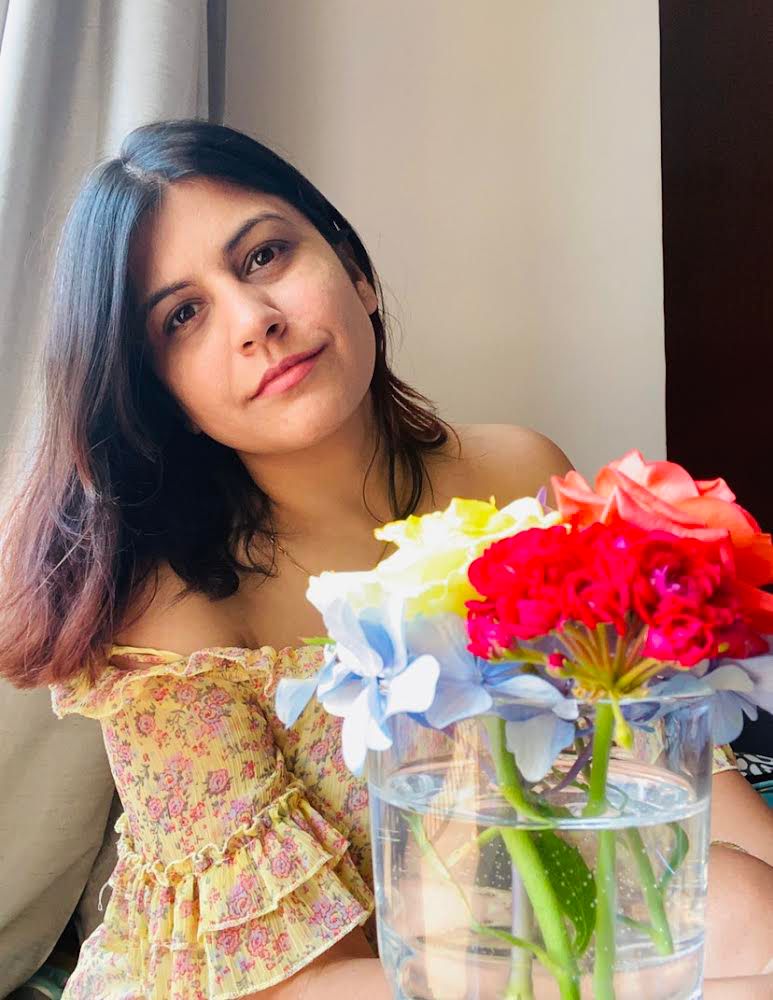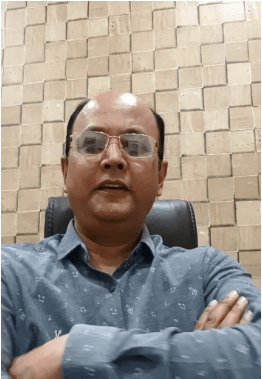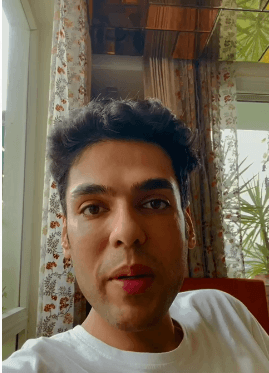
utsav
instudio
- Utsav Unlimited – Get Access to every day studio Based Classes and online Content.
- Aerial Fit- Enjoy Daily studio based Yoga Classes.

utsav
LIVE (ONLINE YOGA)
- Attend Live Group Classes at time of your choice.
- Access hundreds of Recorded classes and Courses.

utsav
PERSONAL TRAINING
- At Home Yoga with experienced trainers working as per your goals and time.
- Unlimited Access to online content.
Courses
On-Demand Classes
Meet Our Teachers

Certified yoga instructor dedicated to improving physical and mental well-being through personalized practices that build strength, flexibility, and balance.

Yoga is an integral part of my being and my sense of lifestyle. Through yoga, I could find my purpose in life, and now I live every day to pass on this gift to all others who aspire to learn. I have completed the certification of the Registered Yoga Teacher 500 Hours Training Course in Hyderabad. I have been a yoga teacher for 7 years. I am as passionate about teaching as a new student is eager to learn. Yoga is a vast concept, but every day is new learning, and I am fortunate to pass on this to you all through my knowledge and experience.

I am certified yoga and Aerial trainer. Let's come together and enjoy the journey of Anti-gravity Yoga.

Aasthaa Dewan is a transformation coach & Founder of MBS Wellness LLP. She works in the area of enhancing happiness, confidence and satisfaction in the life of individuals. She uses scientific tools like subconscious mind reprogramming, Emotional Intelligence, Personality type decoding (DISC) and counseling to help people resolve their problems. Her sessions focus on creating emotional and mental strength. She has been able have breakthrough results through her blended approach of Coaching & Counseling. In her total work experience of 20 years, she has worked with prestigious organizations in management development roles. In the last 7 years, she is spreading the benefits of coaching & counseling in schools, corporate, business houses and entrepreneurial communities.

Neha’s love for movement and expression led her to experience Yoga, a deep spiritual form of Art for her. She then explored it further, completing 700 hours of TTC in Hatha Yoga over the next few years. She ultimately decided to quit her corporate career upon a moment of self-discovery to follow her passion to teach Yoga and share her journey with others. Neha has worked with major Health & Wellness brands like Cult Fit, Utsav & Yogami in managing fellow yogis, training and creating health & wellness content. As someone who has healed & transformed herself through Yoga, Reiki, Breathwork & Meditation, she believes in the science of Yoga and healing through it. With over 10 years of personal practice & teaching experience, Neha continues to spread her love of Yoga to people across the globe. Apart from Yoga, she has a passion for dance & cooking, enjoys traveling and exploring new places.

Viraj is the founder of Utsav Yoga and PK Online, a successful digital media company.

Harsha is known for her non-judgmental, compassionate, and gentle way of teaching. Although she is a trained Hatha, and Ashtanga coach, her style includes healing through asanas, breaths, and focus, with an aim to promote a healthier body, mind, and spirit. Her goal is to make people aware and love themselves, become kinder and liberated in this materialistic world. She was introduced to yoga, and meditation when she was just 7 years old and believes it to be the best gift of her life. She truly believes in getting young kids on board with yoga because the sooner you start, the better you will be at handling life. With that, we will have generous, humble, and awakened future generations.

Certified Hatha Yoga Teacher (YTTC 200 HRS) from Yoga Alliance International, Certified Kundalini Yoga Teacher (YTTC 200 HRS) from Yogi Alliance USA, Certified Quantum Health Coach, Bachelors in Holistic Science from Quantum University (QU), Hawaii USA and currently pursuing a Masters and Doctorate in Integrative Medicine from QU itself, Certified Access Bars Facilitator from Access Consciousness, USA. She has been extensively trained in an Internationally renowned Personal & Professional Development Organization (Landmark) as a trainee and Coach in various programmes a.) Landmark Forum b.) Advance Course c.) Self-Expression & Leadership Programme d.) Communication Access to Power e.) Communication Power to Create f.) Introduction Leadership Programme and Team Management & Leadership Programme. Her keen interest in Energy Medicine & Healing has led her to train herself in many healing modalities through the support of brilliant healers and facilitators in Trauma Healing, Breathwork, Mindfulness Meditation, Quantum Healing and Womb Healing.

Priyanjali is a yoga therapist, sound healer, life-long student and psychologist. With over 8 years of teaching experience, she continues to explore and learn various aspects of yoga through personal practice and study. Owing to her past experience in multiple styles of yoga & therapeutic practices, Priyanjali’s approach to yoga is an amalgamation of non-judgmental awareness through movement, sound, and breath regulation. As a behavioural psychologist who has worked in the field of training & development in the past. She draws inspiration from mindfulness theories and emotional intelligence training, to teach yoga through emphasis on mind- body connection by using the breath.

I am an internationally certified yoga instructor. Come and experience combination of mindful movement, breath connection and spiritual wellness, with specific focus on each individual needs. I have myself experienced the transformative power of yoga and hence I am keen to share the practice of yoga with others. 5+ years of experience. I have worked with several wellness / yoga studios and conducted workshops, personal training sessions.

I am a 200-hour certified yoga instructor, trained under Utsav Yogadhaar and CCYWI Level 2 (Ministry of AYUSH). Passionate about sharing the transformative power of yoga, I guide others through mindful movement, breathwork, and holistic wellness practices.

Dr. Gargee Sharma, BAMS graduate from the esteemed National Institute of Ayurveda, Jaipur, and holder of a PGDHM from IICT, Lucknow, boasts 14 years of clinical Ayurvedic expertise. Having served in esteemed organizations like Shathayu Ayurveda and Patanjali, she specializes in addressing dosha imbalances, lifestyle disorders, and chronic ailments such as asthma and PCOD. Dr. Sharma's approach integrates personalized medicines, Panchakarma therapies, yoga, and lifestyle modifications. She actively conducts camps and workshops, promoting Ayurveda's holistic approach to well-being. Her dedication to excellence and compassionate care solidify her reputation as a trusted authority in Ayurvedic medicine.

Monika Chahal is a dedicated and passionate yoga trainer with a Master’s degree in Yoga. As a lifelong student of the ancient practice, she blends traditional yogic wisdom with modern techniques to create holistic and transformative experiences for her students. Her teaching style emphasizes mindfulness, strength, and inner balance, making her classes accessible and enriching for individuals. Inspires her students to connect with their mind, body, and soul.

For Yogesh Kumar, Sound has been the gateway to awareness, from learning music to today being a Nada Yogi. An accomplished virtuoso with sounds, Yogesh established Sound Healing India to utilize sound as an effective tool to enhance all aspects of life including health, wealth, relationships and work efficiency apart from managing stress & enhancing personal and professional effectiveness.

Skilled and certified yoga instructor with the ability to build effective relationship with student of all background and skill level, hardworking, dedicated and supportive with excellent communication and problem solving abilities. Committed to helping student of all age and background unearth their healthies selves and discover inner peace. I have diploma and masters in Yogic science. And done yoga TTC from Rishikesh.

Namaste I am Naina,a certified yoga instructor with a passion for guiding students to find balance and strength. Specialising in ashtanga yoga , power yoga and mindfulness practices. Join me on the mat for a journey of self discovery and inner peace

Hailing from the historic city of Vaishali, Bihar, Samresh embarked on his yoga journey at a young age under his grandfather's guidance. His formal study of yoga commenced in 2003 at Dev Sanskriti University in Shantikunj, Haridwar, where he deepened his understanding of this ancient practice. In 2007, Samresh's journey expanded globally as he conducted yoga retreats in 15 countries, including Macau, Singapore, Shanghai, Australia, Japan, Korea, and Dubai, sharing the profound benefits of yoga. For Samresh, yoga transcends a profession; it's a calling. His passion is rooted in a desire to contribute to society's well-being, believing in yoga's transformative power for mental and spiritual health, fostering harmony in the world. Samresh's accomplishments include teaching notable figures such as India’s Defence Minister, Mr. Rajnath Singh, and winning numerous gold medals in the Uttarakhand Yoga Championships and All India Inter-University Championships. Known for his motivational phrases like 'do more, gain more' and 'no pain, no gain, try again!,' Samresh's classes are well-received for their transformative impact. His natural ability to connect with individuals from all walks of life enables him to guide them on the path to self-improvement. As your yoga instructor, Samresh is prepared to lead you on a transformative journey through the world of yoga.

Certified and experienced yoga instructor seeking to share my passion for yoga and help individuals improve their mental well - being through the practice of yoga . “Yoga is the perfect opportunity to be curious about who you are”

I am Ashutosh Rana, a professional yoga instructor with a Master of Arts in Yoga Studies. I specialize in teaching various styles of yoga, including Hatha Yoga, Ashtanga, Power Yoga, Vinyasa Yoga, Iyengar Yoga, and Restorative Yoga. My teaching approach is adaptable, allowing me to tailor each class to suit the environment and the specific needs of my students, ensuring an effective and enriching experience.
What our Members are saying?

Utsav yoga has a warm & comfortable environment & that too surrounded with friendly& knowledgeable yoga gurus, who make sure to make one feel comfortable & relaxed while practicing any form of yoga. I feel that apart from gaining strength and flexibility I've been able to connect my physical self with the emotional self.

I started going to utsav aerial yoga in September and have been going since then. I really enjoy the sessions. Aditi is very helpful and inspiring. She gets us to perform amazing aerial postures which I never thought I was capable of.

Aerial classes conducted by Aditi are absolutely blissful, relaxing and invigorating at the same time. She pays equal attention to everyone, always tries her best to get everyone as close to the shown posture as possible. She'll always lift you up, physically and metaphorically to make you feel more confident about getting into relatively hard postures.

The studio is near to my house. It has amazing space and interior is beautiful. They provide all the yoga equipments too. Above all most importantly yoga instructors are very supportive and very down to earth.

Amazing! Big space , hygienic,positive atmosphere and the instructor is very attentive. Ensures that we are properly doing each pose and that we are getting the maximum out of the class.After yoga I have observed my internal breathing issue is being reduced as well as anxiety issues.

Utsav Yoga is great! Wonderful teacher, beautiful space, and a variety of classes that are perfect for busting the stress out of life. Jeet’s expert knowledge of body movement, various tips & techniques to improve flexibility & his attention to detail and amazing energy make for a great instructor! I had my best yoga experience here.

It is a wonderful experience for me have UTSAV Online Classes. I am enjoying it like a UTSAV in my Life.

UTSAV Yoga has helped me reduce the body and increase my energy and flexibility upto a great extent. The best part about UTSAV yoga is everyday its new.

I've been doing Online Yoga with Utsav and felt difference in my health and mental peace and Yoga has major role in my life.
Shop
View AllBlogs

Inspiring Without Preaching: A Yogi's Gentle Guide to Uplifting Family
How Can a Yogi Inspire Their Family Without Forcing Change? Walking the path of yoga is not just about mastering postures or breathing techniques. At its core, yoga is a commitment to live with awareness, responsibility, and love. A yogi learns to take ownership of their body, mind, and emotions, which naturally leads to a state of higher energy, wellbeing, and inner joy. Often, this transformation creates a sincere desire to share the joy of yoga with family and loved ones. However, this desire—while noble—can sometimes lead to friction. Family members might not yet be ready for the practice, or they may hold differing views about what yoga means. So, how does one inspire without imposing? The key lies not in persuasion, but in quiet demonstration—allowing your own joy and discipline to speak louder than words. Here are a few mindful ways a yogi can gently influence their family: 1. Guard Your Emotional Energy Our emotional states are contagious. A yogi must be mindful of not passing on stress, anxiety, or negativity to their family, especially children, who absorb unspoken emotions easily. This doesn't mean suppressing emotions—but rather processing them through your practice before they spill outward. Cultivating a calm presence can become a safe space for your family. 2. Avoid Preaching the Path Wisdom blossoms in silence. Let your yogic values be visible through your daily conduct rather than through lectures. Share insights or practices only when asked. When your words arise from lived experience rather than ideology, they resonate more deeply. 3. Be Steady in Your Discipline Consistency in your practice is one of the strongest forms of inspiration. When family members witness your regular sadhana—be it early morning meditation, mindful eating, or digital detox—they subconsciously absorb those rhythms. Habits are infectious; your discipline may plant the first seeds of curiosity in them. 4. Replace Criticism with Compassion It’s easy to become overly critical of those closest to us, especially when we believe we’ve found a better way. But judgment creates walls, not bridges. If a family member chooses differently or resists your lifestyle, meet them with patience. The yogic path is not a race—it’s a journey that unfolds uniquely for each person. 5. Celebrate Small Shifts Even if your family doesn’t fully embrace yoga, honor the little things: your partner taking a walk mindfully, your child trying a breathing exercise, or a sibling showing interest in healthy food. Encouragement creates momentum. Final Thought: Remember, true inspiration happens through presence, not persuasion. When you live with joy, peace, and awareness, your family will feel it. Over time, your inner transformation becomes an invitation—a silent but powerful reminder that there is another way to live.

Harmonizing Body and Soul: The Interdependent Relationship Between Yoga and Music
Yoga and music, two ancient art forms, have long been intertwined in our society and culture. Their union transcends mere entertainment or physical exercise; it's a harmonious fusion that touches the very essence of our being, nurturing our bodies, minds, and spirits. The Rhythms of Yoga: Finding Flow Through Movement Yoga, with its graceful asanas and mindful breathwork, is a dance of the body and soul. As practitioners flow through sequences, they become adjusted to the rhythm of their breath and the sensations within their bodies. It's a meditative journey inward, a union of movement and stillness that cultivates self-awareness and inner peace. The Healing Power of Music: Vibrations That Echo Within Music, with its melodies and harmonies, has the power to evoke emotions, heal wounds, and elevate consciousness. From ancient chants to modern compositions, music transcends language and speaks directly to the heart. Its vibrations permeate our being, calming the mind, soothing the soul, and igniting the spirit. The Intersection of Yoga and Music: A Symphony of Wellness When yoga and music unite, they create a symphony of wellness that goes beyond the sum of its parts. The rhythmic flow of yoga sequences becomes a canvas for musical expression, while the melodies and rhythms of music deepen the practitioner's connection to their practice. Together, they facilitate a state of heightened awareness, where body, mind, and soul unite in perfect harmony. The Yoga of Sound: Mantras and Chants In the ancient practice of Nada Yoga, the yoga of sound, mantras and chants are used to harness the transformative power of sound vibrations. Whether it's the chanting of Om, the repetition of sacred mantras, or the melodic recitation of hymns, sound becomes a potent tool for self-discovery and spiritual evolution. Through the resonance of sound, practitioners transcend the limitations of the ego and merge with the universal consciousness. Creating Sacred Space: Music in Yoga Practice In yoga studios around the world, music is carefully curated to enhance the yoga experience, creating a sacred space where practitioners can deepen their practice and surrender to the present moment. Whether it's the gentle strumming of a guitar during a restorative class or the pulsating beats of electronic music in a dynamic flow session, music sets the tone for transformation, guiding practitioners on a journey of self-discovery and inner exploration. The Melody of Mindfulness In the symphony of life, yoga and music are the threads that weave together the fabric of our existence. Through the practice of yoga, we cultivate mindfulness and presence, while music serves as the soundtrack to our journey, guiding us along the path of self-discovery and spiritual awakening. Together, they offer us a glimpse into the infinite depths of our being, reminding us of the interconnectedness of all things and the inherent beauty of existence. So, let us embrace the melody of mindfulness, allowing yoga and music to lead us on a journey of healing, transformation, and self-discovery.

The Sacred Essence of Yoga: A Journey to Inner Harmony
Yoga, an ancient practice originating in the Indian subcontinent, has gained immense popularity worldwide for its numerous health benefits and ability to foster inner peace. As people explore this holistic discipline, questions arise about its inherent nature and whether yoga carries a sacred essence. Is yoga merely a physical exercise or does it possess a deeper spiritual dimension? In this blog, we delve into the concept of yoga and examine its sacred qualities to better understand the profound impact it can have on our lives. The Origin and Purpose of Yoga: Yoga has a rich history that dates back thousands of years. It is rooted in ancient Indian philosophy and is closely intertwined with Hinduism, Buddhism, and Jainism. The word "yoga" itself means union or connection and reflects the objective of integrating body, mind, and spirit. Traditional yoga practices were developed as a means to attain self-realization and spiritual enlightenment. Physical and Mental Well-being: One of the remarkable aspects of yoga is its ability to enhance physical and mental well-being. Regular practice of yoga postures (asanas) promotes flexibility, strength, and balance in the body. By focusing on breath control and mindful movement, practitioners experience a sense of grounding and tranquility. The meditative aspect of yoga cultivates mental clarity, reduces stress, and improves overall mental health. The Ethical Foundation of Yoga: Yoga encompasses a holistic approach to life that extends beyond physical exercise. The eight limbs of yoga, as outlined by the sage Patanjali in the Yoga Sutras, provide a framework for ethical living and self-realization. These limbs include moral principles (yamas), self-discipline (niyamas), physical postures (asanas), breath control (pranayama), withdrawal of the senses (pratyahara), concentration (dharana), meditation (dhyana), and absorption into the universal consciousness (samadhi). The Spiritual Dimension of Yoga: While yoga offers various physical and mental benefits, its sacred nature becomes apparent when we explore its spiritual dimensions. Yoga encourages practitioners to embark on a personal journey of self-discovery and transcendence. Through the practice of meditation and mindfulness, individuals can cultivate a deeper connection with their inner selves and the universal consciousness. This spiritual quest can bring about profound transformations, fostering a sense of interconnectedness and oneness with the divine. The Diversity of Yoga: It is important to acknowledge that yoga has evolved and diversified as it spread across the globe. Today, yoga is practiced in various forms, such as Hatha, Vinyasa, Ashtanga, Kundalini, and more. While some contemporary yoga classes may primarily focus on physical exercise and stress reduction, the sacred essence of yoga can still be experienced by those who seek a deeper connection. Many yoga practitioners, regardless of their religious or spiritual beliefs, embrace yoga as a means to nourish their inner selves and find solace amidst the chaos of modern life. Yoga, with its ancient roots and holistic approach, possesses a sacred essence that extends beyond physical exercise. While it offers numerous health benefits and promotes mental well-being, yoga's true potential lies in its ability to facilitate spiritual growth and self-realization. By embracing the principles of ethical living, practicing meditation, and exploring the depths of our inner selves, yoga can become a sacred journey towards harmony, self-awareness, and the realization of our interconnectedness with all living beings. Whether one approaches yoga for physical fitness or seeks a profound spiritual experience, the transformative power of this ancient practice remains undeniable.

Transforming Mind, Body, and Spirit in Three Acts with Yoga
Transforming Mind, Body, and Spirit in Three Acts with Yoga In this blog we delve into the profound transformative power of yoga, unlocking the hidden gems that lie within the practice. Join us on this journey of self-discovery as we uncover the transformative processes that occur within the realms of the mind, body, and spirit. Act 1: The Transformation of Asanas - Harnessing the Power of Yoga Postures The physical body is the vessel through which we experience life. In the first act of our series, we explore the transformative effects of yoga postures, known as asanas, on the body. Asanas act as catalysts for transformation, converting the physical self into a state of balance, strength, and flexibility. Through regular practice, yoga postures have the power to: 1. Transform the Physical Body: Asanas offer a wide range of benefits, from increased strength and flexibility to improved posture and alignment. They help to tone muscles, enhance joint mobility, and promote overall physical well-being. 2. Cultivate Mental Clarity: As we flow through different postures with mindful awareness, the mind becomes focused and centered. The blend of breath and movement brings a sense of calm, reducing stress and enhancing mental clarity. 3. Ignite Spiritual Growth: Yoga postures are not solely a physical endeavor but also a gateway to spiritual exploration. By consciously engaging with the body and breath, we connect to our inner selves and tap into the inherent wisdom and power that resides within. Act 2: The Transformative Breath - Pranayama and Inner Change Breath is the bridge between the body and the mind, and in the second act, we explore the transformative power of pranayama, the science of breath control. Through various breathing techniques, we harness the potential of the breath to purify, vitalize, and expand our consciousness. Here's how pranayama facilitates inner transformation: 1. Purification and Vitalization: Pranayama practices purify the energetic channels (nadis) and optimize the flow of prana (life force energy). This purification process revitalizes the body, increases vitality, and enhances overall well-being. 2. Expansion of Consciousness: Through breathwork, we tap into the expansive nature of our consciousness. Practices like deep diaphragmatic breathing, alternate nostril breathing, and Kapalabhati purify the mind, awaken awareness, and elevate our state of consciousness. 3. Igniting the Inner Fire: Advanced pranayama techniques such as Bhastrika and Shambhavi Mudra activate the inner fire, or Kundalini energy, which resides at the base of the spine. This awakened energy rises through the subtle energy channels, leading to profound spiritual experiences and self-realization. Act 3: The Integrative Approach - Applying Yoga Philosophy in Daily Life Yoga is not confined to the mat; it is a way of life. In the final act of our series, we explore the transformative potential of integrating yoga philosophy and principles into our daily lives. Through this integration, we foster holistic well-being, cultivate meaningful connections, and navigate life with grace and mindfulness. Here's how integrating yoga philosophy and lifestyle can transform us: 1. Cultivating Oneness: The philosophy of yoga guides us toward recognizing the inherent interconnectedness of all beings. By embracing this wisdom, we foster compassion, empathy, and loving-kindness, transforming our relationships with ourselves, others, and the world around us. 2. Living a Yogic Lifestyle: Yoga encompasses more than just physical postures; it offers a blueprint for conscious living. By adopting yogic principles such as non-violence (ahimsa), truthfulness (satya), and self-discipline (tapas), we create a solid foundation for personal growth and transformation. 3. Integration: The true essence of yoga lies in its integration into our everyday lives. By weaving yoga practices into our routines, nurturing our bodies and minds, and aligning our actions with our deepest values, we become living embodiments of the transformative power of yoga. Yoga is a transformative journey that encompasses the realms of the mind, body, and spirit. Through the processes of asanas, breathwork, and the integration of yoga philosophy, we unlock our innate potential for growth, healing, and self-realization. Join us in this exploration as we delve deeper into the transformational power of yoga, illuminating the path to holistic well-being and inner growth.

Incorporating Chair Yoga into Daily Routine: A Step-by-Step Guide for Seniors
Incorporating Chair Yoga into Daily Routine: A Step-by-Step Guide for Seniors As we age, maintaining physical well-being becomes increasingly important. Chair yoga offers a gentle yet effective way for seniors to stay active, improve flexibility, and foster a sense of tranquility. In this step-by-step guide, we'll explore how to seamlessly integrate chair yoga into your daily routine, promoting a healthier and more balanced lifestyle. Step 1: Establish a Consistent Time Choose a time of day that suits your schedule and energy levels. Whether it's in the morning to invigorate your day or in the evening for relaxation, consistency is key. Step 2: Find a Quiet and Comfortable Space Select a quiet space with enough room for your chair and arm movements. Ensure the area is clutter-free to create a peaceful environment for your practice. Step 3: Invest in a Stable Chair Choose a sturdy chair without wheels, ensuring it provides proper support. Sit with your feet flat on the ground, maintaining a comfortable and upright posture. Step 4: Begin with a Gentle Warm-Up Start your chair yoga routine with gentle warm-up exercises. Rotate your ankles, wrists, and shoulders to increase blood flow and prepare your body for the upcoming poses. Step 5: Focus on Breath Awareness Shift your attention to your breath. Inhale deeply through your nose, expand your lungs, and exhale slowly through your mouth. Conscious breathing promotes relaxation and concentration. Step 6: Explore Seated Poses Engage in a series of seated yoga poses, such as mountain poses, forward bends, and gentle twists. These poses enhance flexibility and strength without putting strain on your joints. Step 7: Incorporate Arm Movements Extend your arms in various directions, incorporating gentle movements to enhance upper body flexibility. This helps alleviate tension and improves the overall range of motion. Step 8: Embrace Mindfulness Meditation Integrate mindfulness meditation into your routine. Focus your mind on the present moment, letting go of stress and promoting mental clarity. Utilize guided meditation or calming music if desired. Step 9: Gradual Progression As you become more comfortable with chair yoga, gradually introduce new poses and movements. Listen to your body, and don't push yourself beyond your comfort zone. Step 10: Cool Down and Relaxation Conclude your chair yoga session with a few minutes of relaxation. Sit comfortably, close your eyes, and focus on your breath. This step helps in transitioning smoothly back to your daily activities. Incorporating chair yoga into your daily routine doesn't require a significant time commitment but can yield numerous physical and mental health benefits. By following this step-by-step guide, seniors can enjoy the enriching practice of chair yoga, promoting overall well-being and vitality in their daily lives.










































